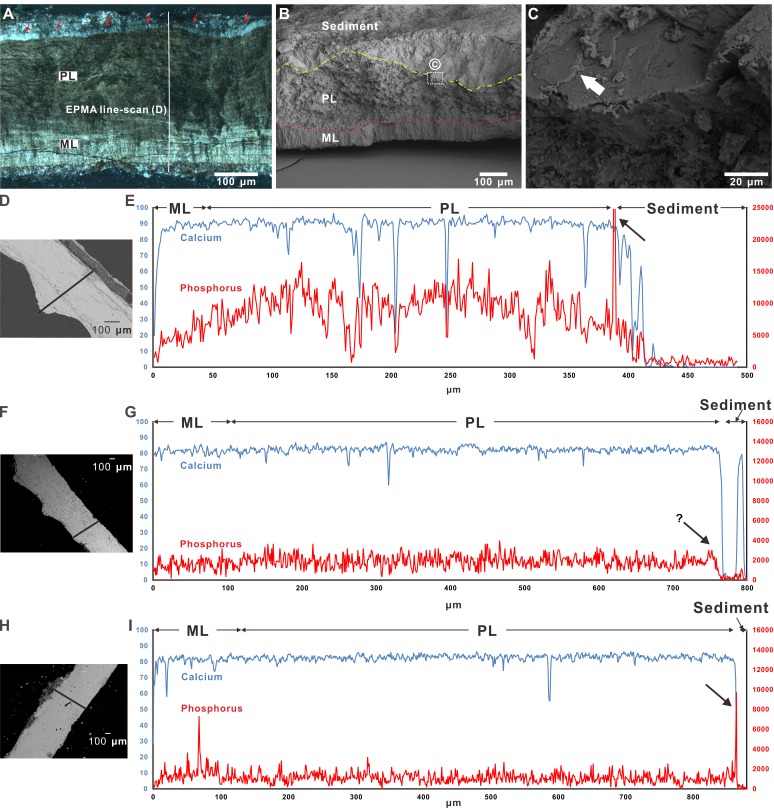Figure 3. Microscopic images of Macroolithus yaotunensis eggshell from Henan, Jiangxi, and Guangdong and their line-scan spectra.
(A) The Macroolithus yaotunensis eggshell (NMNS CYN-2004-DINO-05-I) from Jiangxi under the polarized light microscope. The red arrows indicate the indistinct boundary between the sediment and an enigmatic layer. This enigmatic layer probably was formed by the interaction between organics of the egg and surrounding sediment. The location of the EPMA line-scan spectra in (D) is indicated by the white solid line. In this eggshell image, a smooth boundary between the prismatic and mammillary layers (PL and ML, seen as dark and light zones) is clearly observed. (B) SEM image of radial untreated fracture of the Macroolithus yaotunensis eggshell. The boundary between the sediment and prismatic layer is marked by yellow dashed line based on their distinct structural features. The boundary between ML and PL is marked by the red dashed line. The ML shows the distinct vertical mammillae structure. (C) Close-up image of the area in white box in (B). Possible preservation of cuticle is indicated by the white arrow, showing patchy and flaky structures similar to the cuticle on the modern chicken eggshell (Figs. 1C and 1D). (D, F, H) The microscopic image shows the radial cut section of studied Macroolithus yaotunensis eggshells seen in the SEM coupled with the EPMA and elemental line-scan track marked as black lines. (D) The spectra illustrate the distribution of Ca and P across the eggshell from the Hongcheng Basin in Jiangxi shown in (A), from innermost (left) to outermost, as indicated by the white line in the microscopic image. The Ca spectrum clearly marks the extent of the calcitic eggshell. A significant peak that is marked by a black arrow demonstrates a relatively high concentration of P, indicating the possible preservation of the cuticular HAp layer. (G) The spectra illustrate the distribution of Ca and P across the eggshell from the Liguangqiao Basin in Henan, from innermost (left) to outermost. The Ca spectrum clearly marks the extent of the calcitic eggshell. A slightly higher amount of P near the interface between the eggshell and sediments, as indicated by a black arrow, is observed. (I) The spectra illustrate the distribution of Ca and P across the eggshell from the Nanxiong Basin in Guangdong, from innermost (left) to outermost. A significant peak that is marked by a black arrow demonstrates a relatively high concentration of P, indicating the possible preservation of the cuticular HAp layer. ML, mammillary layer; PL, prismatic layer. Credit of the SEM images and drawings: Tzu-Ruei Yang (Universität Bonn).

